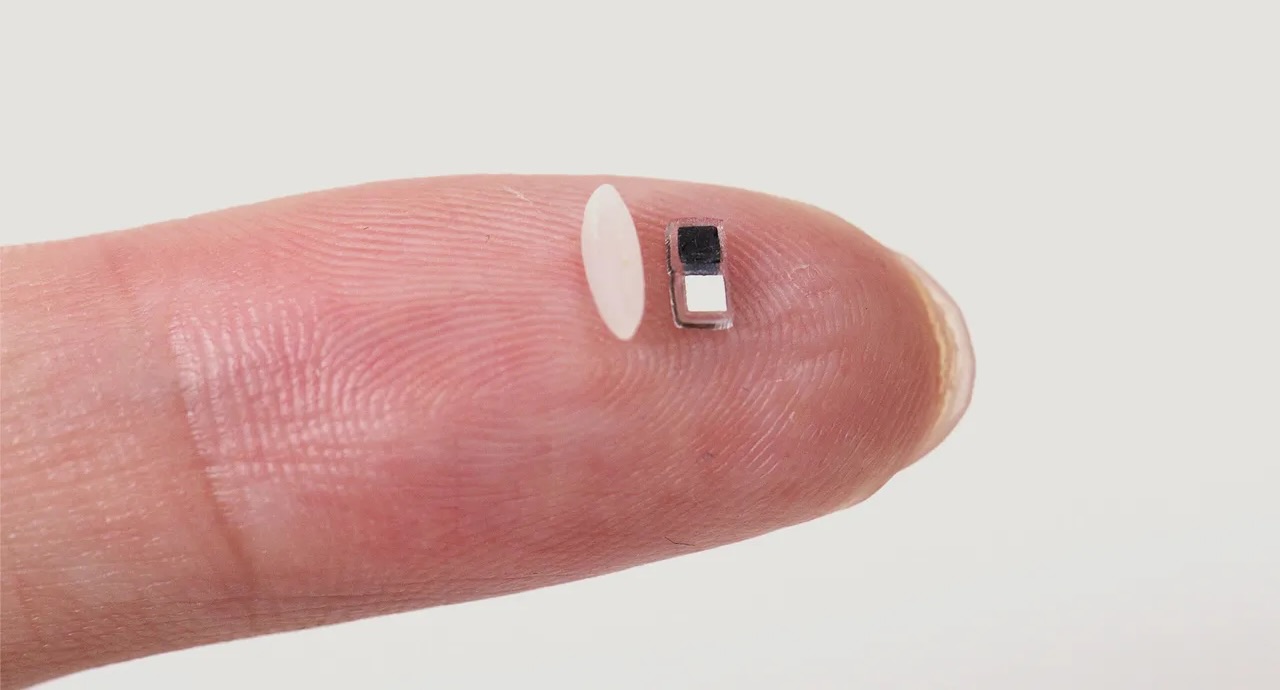
in our country, especially in small towns and villages, babies born with heart problems often don’t make it. It’s painful to say, but it’s true. Many of them come into the world too early or too weak, and their tiny hearts can’t keep up. Some need surgeries, others just need help with their heartbeat. But what do we do when even the tools we have are too big for such small lives, Well, recently, something very new and very tiny came into the picture a heart pacemaker that’s smaller than a grain of rice. And believe it or not, this tiny thing might save a lot of lives, especially in places like ours.
So What’s This Pacemaker All About?
We all know about pacemakers, right? Those little machines that help the heart beat properly. Normally, they’re used for old people or heart patients. But here, we’re talking about newborn babies tiny, delicate, barely a few days old. For them, even the smallest regular pacemaker is too big and risky.
Now, scientists have made this new kind of pacemaker one that’s super small and can be injected into the body. No wires, no surgery, no stitches. You just push it in with a syringe, and it starts working. Sounds unbelievable, but it’s real.
And the best part? After a few days, it melts inside the body. No need to remove it. That means one less operation for the baby. One less tension for the parents.
Why It’s a Big Deal for Our Side of the World
Let’s talk honestly. In big cities, there are fancy hospitals, machines, and specialists. But in small towns, we don’t have all that. Many government hospitals can’t even manage regular heart surgeries, let alone high-tech tools.
That’s why this tiny device could be such a blessing. If doctors can use it even in basic hospitals, then even babies in rural areas will get a chance to survive.
Think about it — if something like this can be done with just a syringe, how many lives can be saved?
How Does the Pacemaker Actually Work?
Okay, without getting too technical, this thing doesn’t have batteries or wires. It works using the body’s natural fluids. There are small metal bits inside it that create tiny electrical pulses when they touch those fluids. That’s enough to keep the heart beating properly for a few days.
To control it, doctors stick a soft patch outside the baby’s chest. Like a small sticker. That patch sends signals (using light!) to tell the pacemaker what to do. No pain. No wires poking inside.
After about a week, when the baby’s heart gets stronger, the device dissolves inside. The body just absorbs it. Simple as that.
Made for Newborns – Not Adults, Not Older Kids
This isn’t a ‘mini version’ of a regular pacemaker. It was made only for babies, especially those who just had heart surgery. In such cases, doctors only need to support the heart for a few days not forever.
Till now, they used regular pacemakers, which had to be removed later. That meant another surgery, more pain, more time in the hospital. This new one avoids all that.
Where It Was Made – And Why It Gives Us Hope
A team of engineers in the US, at Northwestern University, made this device. They knew that babies in many parts of the world, like India, don’t survive because we simply don’t have the right tools. So they built this with exactly that in mind.
It’s not flashy. Not expensive. Just smart. Something that can quietly do its job and disappear without a trace. Kind of like a guardian angel inside the baby’s body.
This Could Be a Lifesaver in India
Let’s look at the numbers. India has over 2.5 crore births every year. Out of those, lakhs of babies are born with heart defects. In villages, many of these babies don’t get the treatment they need. Some families can’t travel. Others don’t even know their child has a heart problem until it’s too late.
This device could change that. If government hospitals get it, if NGOs help spread it, we could see survival rates go up — not just in cities, but also in small districts and towns.
Real-Life Hope – Not Just Science Talk
There was a case in the US — a baby named Mikey. He was too small for a regular pacemaker. Doctors didn’t know what to do. Cases like his are what inspired this invention. In India, we’ll have many more such cases.
Once this device starts being used here, we’ll see real stories of survival. Babies who got a second chance. Parents who didn’t have to bury their child just because treatment wasn’t possible.
Simple, Smart, and So Needed
Honestly, I feel proud that humans can invent such things. But I also feel sad that it took so long. We’ve lost too many babies already. This device won’t fix everything but it’s a big step in the right direction.
Sometimes, the best solutions are not the biggest machines, but the tiniest ones that quietly do their work.
Final Thoughts
If you’re a doctor, nurse, health worker, or just someone who cares, keep an eye on this. Share it. Talk about it. Push for it to come to India soon.
And if you’re a parent-to-be, just know science is trying its best. One small invention at a time.
🔗 Useful Links
- For more details on the world’s smallest pacemaker, check out the official Northwestern University website.
- Curious about other groundbreaking medical innovations? Dive into our article on recent advancements in pediatric cardiology.
- Want to understand more about temporary pacemakers for adults? Here’s a detailed guide on how pacemakers work.
- Interested in this? You’ll also want to read: How to Build a Healthy Routine for Your Family

No comments yet. Be the first to comment!